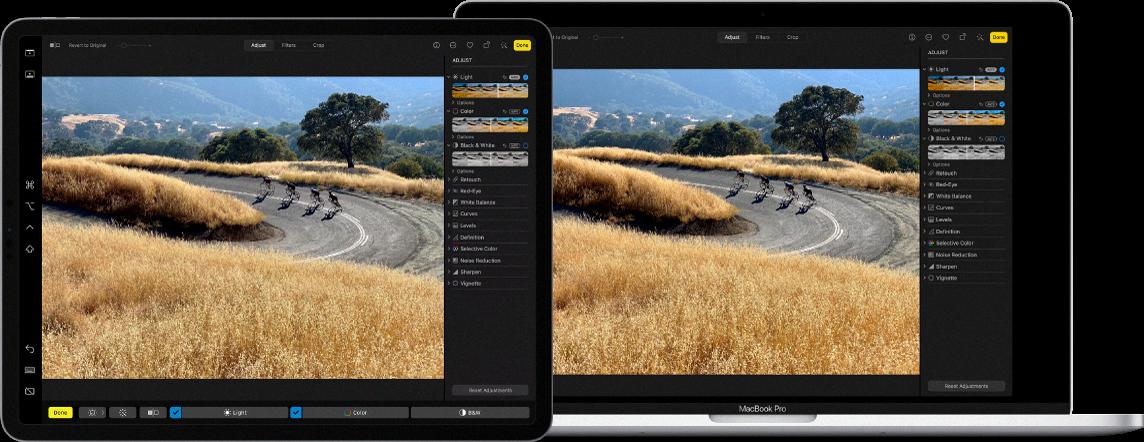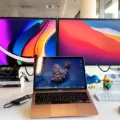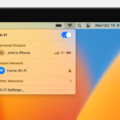Mac users have the flexibility to connect and use multiple displays simultaneously, allowing for enhanced productivity and a more immersive computing experience. By mirroring one display and extending another, you can optimize your workflow and enjoy a larger virtual workspace. In this article, we will explore the steps to mirror one display and extend another on a Mac.
To begin, open System Preferences on your Mac. You can access it by clicking on the Apple logo in the top-left corner of the screen and selecting “System Preferences” from the drop-down menu. Once in System Preferences, locate and click on the “Displays” icon.
In the Displays settings, you will see a tab labeled “Arrangement.” Click on it to access the display arrangement options. Here, you will find a checkbox labeled “Mirror Displays.” By default, this option is checked, which means your displays are mirrored, displaying the same content simultaneously.
To mirror one display and extend another, uncheck the “Mirror Displays” checkbox. This action will separate your displays, allowing you to have different content on each one. You can drag and arrange the displays in the desired order to match their physical placement. This ensures that your mouse cursor moves seamlessly across the displays.
Once you have unchecked the “Mirror Displays” checkbox and arranged the displays, you can now choose which display you want to mirror and which display you want to extend. To mirror a display, simply drag the white bar at the top of the window onto the desired display. This will duplicate the content from one display onto another, making them show the same information.
On the other hand, to extend a display, ensure that the white bar is on the display you wish to extend. This allows you to have a larger virtual workspace where you can open different applications or documents on each display.
It is important to note that not all Mac models support multiple displays or have the same capabilities. MacBook Pro (14-inch, 2023) and MacBook Pro (16-inch, 2023) models with the M2 Pro chip, for example, support up to two external displays simultaneously. The maximum resolution and refresh rate of each external display may vary, with support for resolutions up to 8K and refresh rates up to 240Hz.
By following the steps outlined above, Mac users can easily mirror one display and extend another, allowing for a more versatile and productive computing experience. Whether you need to present content on multiple screens or simply expand your workspace, this feature provides the flexibility you need. Take advantage of this functionality to optimize your workflow and make the most out of your Mac’s capabilities.
How Do You Mirror One Screen And Extend Another?
To mirror one screen and extend another on a Windows computer, follow these steps:
1. Right-click on an empty area of your desktop. This will open a context menu.
2. From the context menu, select “Display settings.” This will open the Display settings page in the Settings app.
3. Scroll down the Display settings page until you reach the “Multiple displays” section.
4. In the “Multiple displays” section, you will see two options: “Duplicate these displays” and “Extend these displays.”
5. If you want to mirror your main screen on another display, select “Duplicate these displays.” This will make both screens show the exact same content.
6. If you want to extend your main screen and use the second screen as an additional workspace, select “Extend these displays.” This will allow you to move windows and applications between the two screens, effectively increasing your desktop space.
7. Once you have selected your desired option, Windows will apply the changes automatically. You can also rearrange the position of the displays by dragging and dropping them in the “Display settings” page.
8. If you want to adjust the resolution or other display settings for each screen individually, click on the “Advanced display settings” link at the bottom of the page.
In summary, to mirror one screen and extend another on a Windows computer, right-click on the desktop, choose “Display settings,” scroll down to the “Multiple displays” section, and select either “Duplicate these displays” or “Extend these displays” depending on your preference.

How Do You Make Dual Monitors Not Mirror Each Other Mac?
To make dual monitors on a Mac not mirror each other, you can follow these steps:
1. Open System Preferences: Click on the Apple menu in the top-left corner of the screen, and then select “System Preferences” from the drop-down menu.
2. Select Displays: In the System Preferences window, locate and click on the “Displays” icon. This will open the display settings for your Mac.
3. Select Arrangement: Within the Displays settings, navigate to the “Arrangement” tab.
4. Uncheck Mirror Displays: In the Arrangement tab, you will see a checkbox labeled “Mirror Displays.” By default, this option is enabled, which causes both monitors to display the same content. To disable mirroring, simply uncheck this box.
5. Adjust Monitor Positioning: Once you uncheck the Mirror Displays option, you can arrange the positioning of your dual monitors by dragging and dropping the white menu bar at the top of the Arrangement tab. This allows you to set the physical arrangement of your monitors according to your preference.
6. Arrange Display Resolution: If your dual monitors have different resolutions, you may need to adjust the resolution settings for each monitor individually. To do this, select the “Display” tab within the Displays settings and adjust the resolution dropdown for each monitor as needed.
7. Save Changes: After making the desired changes, close the System Preferences window, and your dual monitors will no longer mirror each other.
By following these steps, you can effectively set up your Mac to have dual monitors that are not mirrored, allowing you to extend your desktop and have separate content displayed on each screen.
Can You Connect Your MacBook Pro to Two External Monitors?
It is possible to connect your MacBook Pro to two external monitors. However, the ability to do so depends on the specific model of your MacBook Pro and its supported specifications.
The MacBook Pro models released in 2023, namely the MacBook Pro (14-inch, 2023) and MacBook Pro (16-inch, 2023), are equipped with the M2 Pro chip, which offers enhanced graphics capabilities. These models support connecting up to two external displays simultaneously.
The key factors that determine the feasibility of connecting two external monitors are the resolution and refresh rate of each display. The M2 Pro chip can handle resolutions of up to 8K and refresh rates of up to 240Hz for each external display.
It’s essential to note that while your MacBook Pro may support connecting two external monitors, you may need additional adapters or cables, depending on the display ports available on your MacBook Pro and the input ports on your external monitors.
Conclusion
Mac offers a seamless and user-friendly experience when it comes to changing the external display mode. By following a few simple steps in the System Preferences, users can easily adjust the display settings to their preferences. Whether you want to duplicate your display for presentations or extend your display for multitasking, Mac provides the flexibility to meet your needs.
Furthermore, with the latest MacBook Pro models featuring the powerful M2 Pro chip, users can take advantage of the exceptional capabilities to connect up to two external displays simultaneously. This opens up a world of possibilities for professionals in various fields, such as designers, developers, and content creators, who require multiple displays to enhance productivity and workflow.
The ability to connect and configure external displays on Mac not only enhances the visual experience but also helps users customize their workspace according to their preferences. With the support for high resolutions and refresh rates, Mac ensures that the external displays deliver stunning visuals and smooth performance, catering to the demands of even the most demanding tasks.
Mac’s intuitive interface and advanced features make it a top choice for users who value efficiency and productivity. Whether you’re working on complex projects, giving presentations, or simply expanding your screen real estate, Mac offers a seamless and customizable external display experience that enhances your workflow and elevates your computing experience to new heights.








